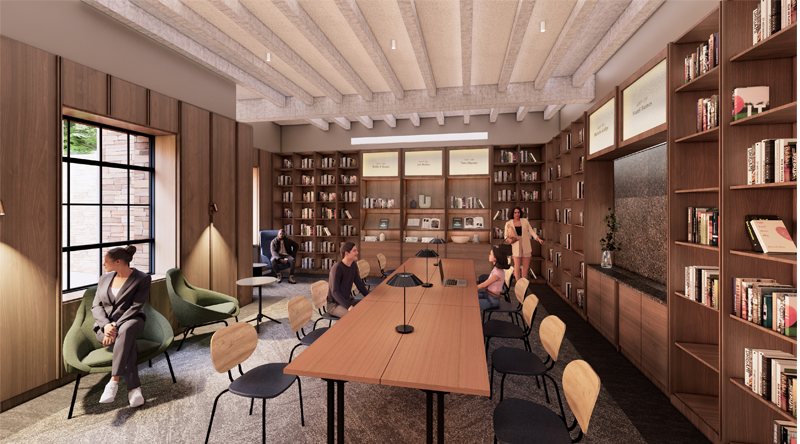By Eric Althoff
BOULDER, Colo.—Designers Hacker Architects and Handprint Architecture have unveiled the design for the Hellems Arts and Sciences Building and Mary Rippon Theatre Capital Renewal Project at the University of Colorado Boulder. The project entails renovating the Depression-era Charles Klauder building located within the university’s Norlin Quadrangle National Historic District. The designers will be working with general contractor Adolfson and Peterson.
The new venue, due to be completed in the summer of 2025, is aiming for LEED Gold Certification.
The 102,000-square-foot project allows the designers to reimagine the Hellems Arts and Sciences Building as a modern learning environment while simultaneously respecting its historic character. The redesign entails a combination of quiet study areas as well as spaces dedicated to group learning. In a bid for sustainability, the designers are reutilizing the original building’s footprint. They will remove certain layers of walls so that students will be able to enjoy ample natural lighting and views of the outside.
“Charles Klauder, the original architect, famously said he wasn’t that interested in the interiors of the buildings he designed. We set out to fix that mistake, turning what was a dark and inwardly focused building with challenging wayfinding and lack of connectivity into a light-filled, inter-connected hub for CU students and faculty to thrive,” Nick Hodges, principal at Hacker Architecture and Interiors and market sector leader for the firm’s higher education practice, said in a statement emailed to School Construction News.
In addition, the design team will connect the main entryway with the Mary Rippon Theatre in the courtyard that will allow in even more natural lighting. Two new porches will be set up for outdoor gathering, and will play a prominent part in the annual Colorado Shakespeare Festival, which takes place in the summer. The indoor Mary Rippon Theatre will also undergo a series of renovations for infrastructural and accessibility improvements.
The design team is restructuring the building’s east wing for new classrooms and consolidating faculty offices in the west wing. The design incorporates exposed concrete, stone, and wood floors. Despite the renovations, the designers will preserve the historic facade except for certain window replacements.
“The campus is renowned for its regionally inspired facades, a hallmark of CU Boulder’s identity,” said Hodges. “Our aim was to bring these distinctive features indoors by incorporating regionally sourced materials, emphasizing craftsmanship and attention to detail in every aspect of the design. By maximizing natural light and showcasing the breathtaking views of the surrounding campus, we sought to foster a deeper connection not only with the university but also with the broader region.”
In an additional statement to School Construction News, d’Andre Willis, assistant vice chancellor for planning and design and campus architect said that the design team of Hacker and Handprint understood CU Boulder’s history as well as the school’s looking to the future simultaneously.
“They quickly understood how important the Hellems Building is on campus because of its role anchoring CU Boulder’s historic quadrangle and sheltering the Mary Rippon Theater,” Willis said. “Led by [Hacker Principal] David Keltner, they responded to the challenge of renewing the building while respecting its strengths by designing interventions big and small that open the interior to daylight and views, create welcoming collaboration and study spaces for the students and faculty, provide excellent classroom space, and completely refresh the experience for patrons of the outdoor theater. Alumni will be greeted back to a place they know and love, while current students will build new memories in space that is creatively reorganized for contemporary college life. The result is a building that is ready for its next 100 years.”


